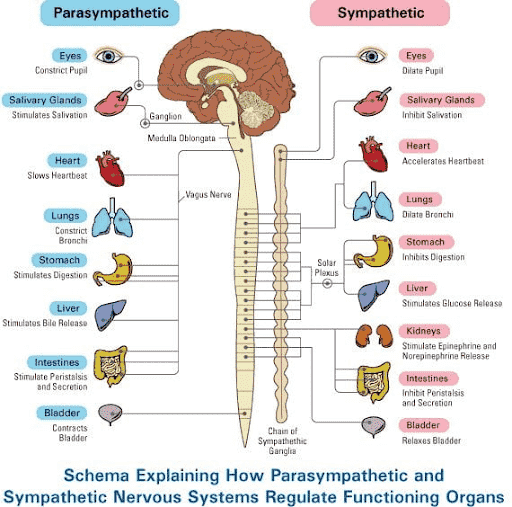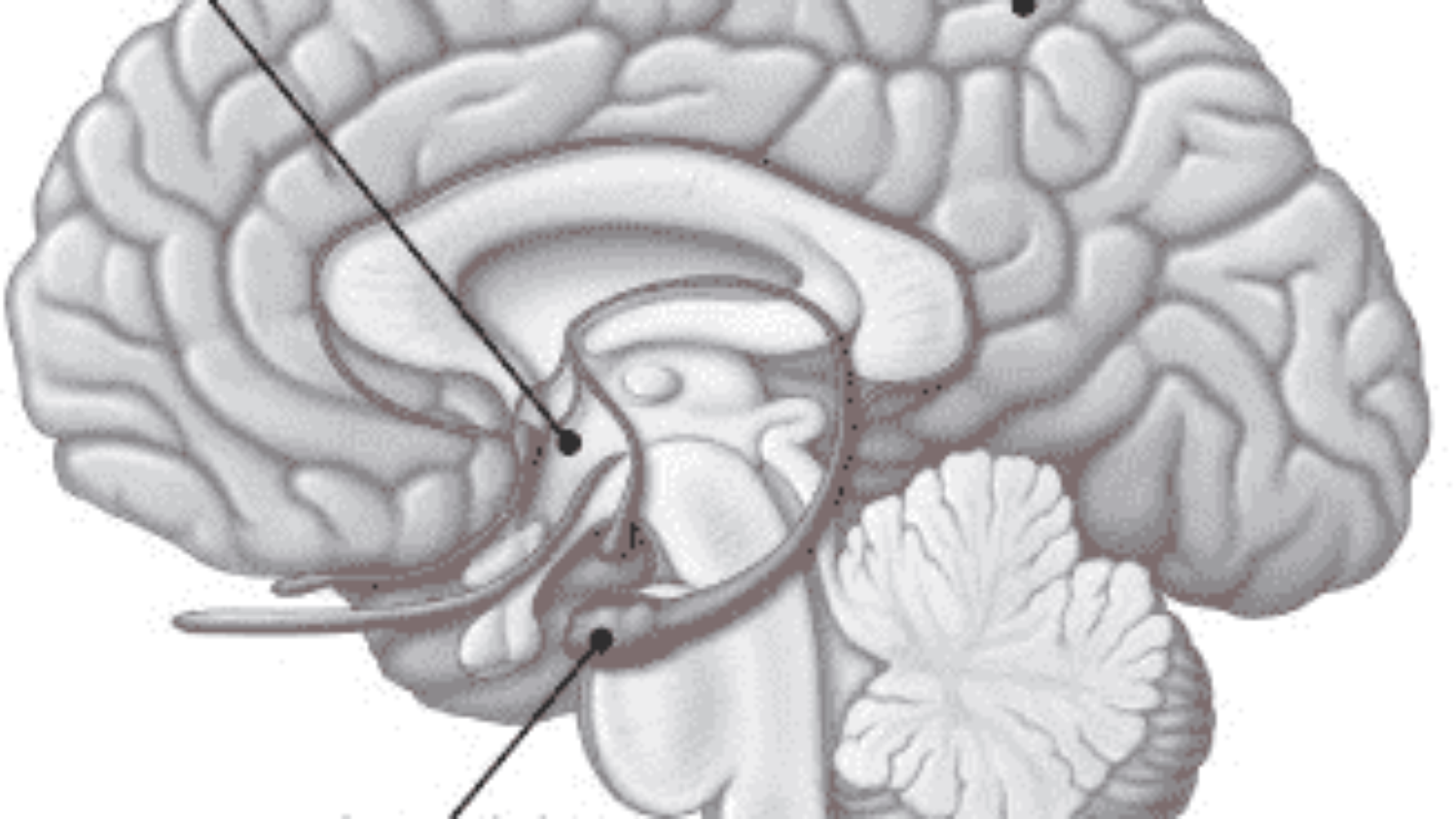
The fight or flight response is a physiological response from high-stress levels or dangerous situations. It’s a natural response that can save lives. This response helps us escape danger or prepare for a physical confrontation. So you might be wondering, “How is this response activated?”
It starts with the brain, specifically the amygdala. The amygdala senses a potential threat and sends a signal to the hypothalamus. This signal activates the sympathetic nervous system. The sympathetic nervous system connects the brain to internal organs using spinal nerves. It’s responsible for responding to threats and stress. When this system is stimulated, the heart rate and blood flow to the muscles increase while blood flow to the skin decreases. A large part of this response is the hormones released, such as adrenaline and cortisol. Adrenaline is a hormone produced by your adrenal glands, and it’s quickly sent to your bloodstream. Adrenaline increases focus, which is why we are able to make quick decisions in our fight-or-flight response. Cortisol is a stress hormone that controls blood sugar levels, regulates metabolism and acts as an anti-inflammatory. The body is now prepared to respond!
During this response, your body is prioritizing anything it needs for survival. Digestion, reproductive and growth hormone production, and tissue repair are halted. Your body prioritizes what to expend its energy on.
Your sympathetic nervous system responds to danger, and your parasympathetic nervous system is responsible for maintaining homeostasis (our body’s way of maintaining overall stability). It ensures that everything in our body is running smoothly. Dr. Fisher says “[t]hink of your sympathetic and your parasympathetic nervous system like your car’s gas and brakes…[y]ou need to use both effectively for your car to run properly.” Your sympathetic system keeps you alive in danger, and your parasympathetic system relaxes your body so you can return to normal.

In prehistoric times, we were surrounded by danger and various threats. A rustling bush, for example, could indicate that a lion is attempting to kill you. Our ancestors developed this response for our survival. There may not be immediate danger around us anymore, but we still have this instinct. This can become a problem when our fight-or-flight response gets triggered in non-threatening situations such as giving a presentation or meeting a deadline for a project. Our body reacts to these situations as if they are truly dangerous.
This response may not always be beneficial. The response can be counterproductive if the stress isn’t perceived as a real threat. This can lead to anxiety or physical symptoms like insomnia and headaches. Repeatedly activating this response can lead to chronic stress. Chronic stress may cause long-term problems that affect the heart and blood vessels. Since there is a constantly increased heart rate, there are higher levels of stress hormones and blood pressure. Our muscles can become “stuck” in a guarded state. Some triggers include fear, stress, and environmental factors like loud noises or bright lights. It’s important to learn how to manage this response. Breathing exercises are one technique to accomplish this. Deep breathing exercises activate the parasympathetic nervous system and can counteract the effects of the response. Regular exercise and physical activity can also reduce stress and improve your health.
This response can save us from potential dangers. Our body becomes prepared to respond to these stresses with the help of our nervous system. While it was helpful for our ancestors, it may also contribute to heightened stress responses in modern times. It’s important to find ways to manage our stress using healthy coping mechanisms.
Sources
https://www.britannica.com/science/sympathetic-nervous-system
https://health.clevelandclinic.org/what-happens-to-your-body-during-the-fight-or-flight-response/#:~:text=%E2%80%9CThe%20fight%2Dor%2Dflight,perceived%20as%20a%20dangerous%20situation.%E2%80%9D
https://my.clevelandclinic.org/health/body/23038-adrenaline#:~:text=Adrenaline%20(epinephrine)%20is%20a%20hormone,%E2%80%9Cfight%20or%20flight%E2%80%9D%20response
https://www.health.harvard.edu/staying-healthy/understanding-the-stress-response
https://www.apa.org/topics/stress/body#:~:text=Chronic%20stress%2C%20or%20a%20constant,a%20toll%20on%20the%20body


You should take part in a contest for one of the finest sites on the net. Im going to highly recommend this website!